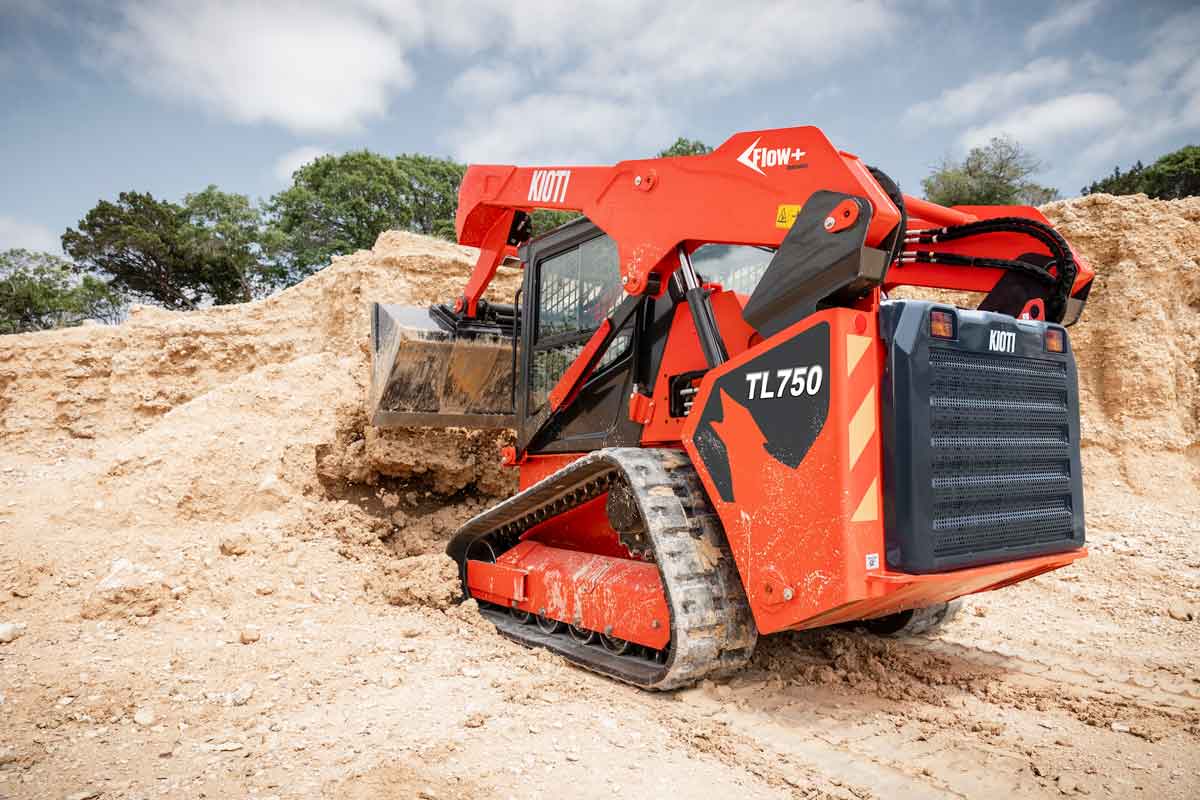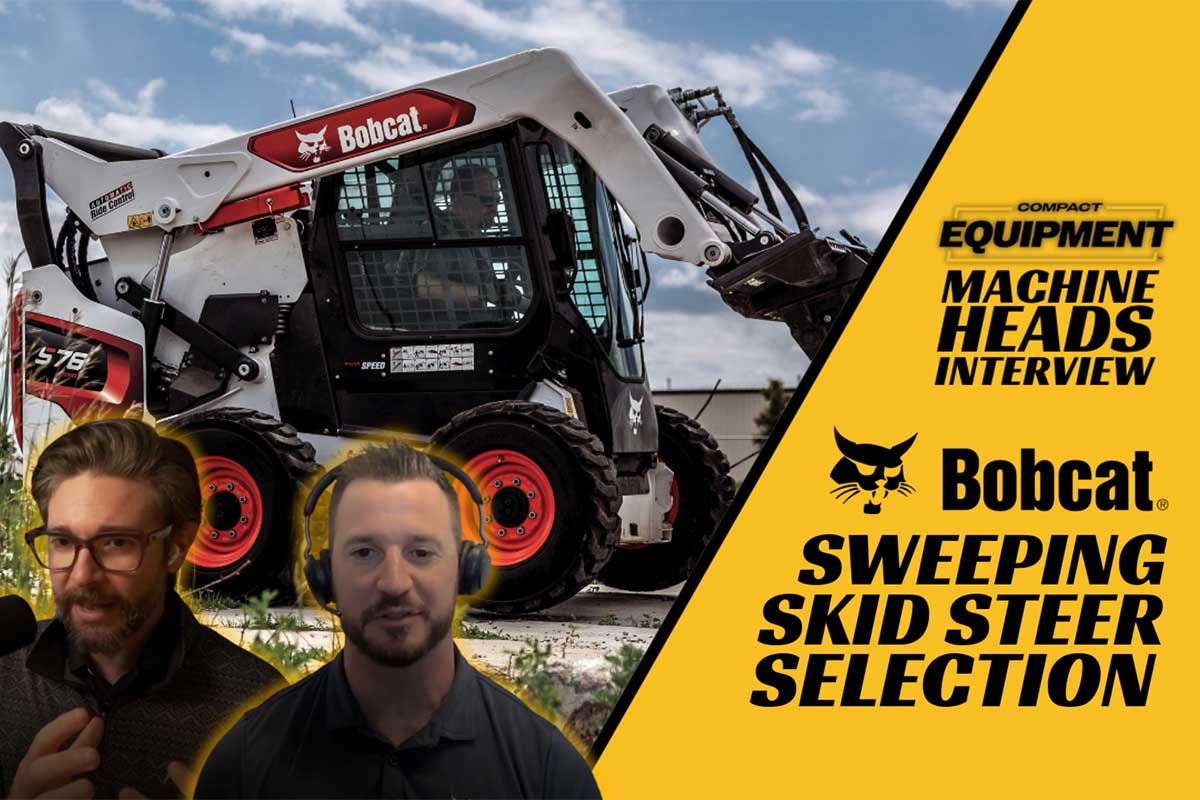Training Day
Skid steer loaders are indispensable on most jobsites today. They can do an incredible amount of work in the hands of a skilled and safe operator. But in the hands of an unskilled operator, they can also do a considerable amount of damage or injury. Their handling characteristics also introduce some unique safety concerns, which operators of all skill levels need to take heed of. Here are some tips to help your operators stay safe and productive when operating the Swiss Army Knife of construction equipment — the skid steer loader.

Know Your Jobsite
The first step toward safe operation of skid steer loaders is to know your jobsite. Because of their unique combination of small size, speed and exceptional maneuverability, a site inspection is critically important before you strap yourself into your loader. Consider:
- Where will you be traveling as part of your jobsite tasks?
- What are the ground conditions like? Smooth and hard? Muddy and rutted?
- What obstacles will you encounter on a typical work cycle? Curbs, berms, ditches, culverts, narrow aisles, rough ground and other machines are all potential obstacles that you should consider as part of your site analysis.
- What tools and attachments will you be using on this job? How large and heavy are they, and how will they affect the handling characteristics of your skid steer loader?
Keep in mind that jobsite conditions can easily change throughout the day, so you must be vigilant for potential hazards whenever you’re operating your skid steer. If you get lazy and don’t pay attention to unpredictable people and equipment even for a few seconds, someone could get hurt or killed. One other thing to keep in mind: Skid steer loaders can work in extremely tight, confined and narrow spaces. As an operator of one of these machines, you may underestimate its clearance requirements, potentially causing property damage. In addition, skid steers can easily be overlooked by operators of larger machines, potentially leading to close calls and even collisions with them.
Visibility Issues
Because the operator of a skid steer loader is so accessible, other workers on the jobsite and pedestrians may approach the machine to talk to you. Because these diminutive loaders have nearly non-existent rear and side visibility, you may not be aware that people are approaching on foot. If you swing in their direction before they come into view, they could be severely injured or killed. When operating a skid steer loader, swivel your head around to scout the area before you execute a turn, so you can avoid any people or obstructions. Many experienced operators jokingly tell new recruits that having a swivel head like a bobble-headed doll will land you a skid steer job anywhere, anytime. Shoulder checking can be a real pain in the neck, but a necessary and unavoidable part of performing your job safely.
Finally, a raised bucket can impair your forward vision. When traveling, keep the bucket below eye level, so you can clearly see where you’re going and avoid any obstructions that may be in your path. This will also keep the machine’s center of gravity low, for improved stability on rough ground.
Safe Entry and Exit
If you’re accustomed to operating larger equipment, the skid steer looks innocent enough, especially when it comes to boarding one. But doing so safely is harder than it looks, because (for most units) you must enter the cab from the front of the machine by stepping over the back lip of the bucket, while holding onto the grab handles that protrude from the front of its roll-over protective structure (ROPS). You must then let go of the handles, spin around, grab onto them again and lower yourself into the operator’s seat. For maximum safety, you must maintain three-point contact throughout the mounting process.
Never use a control lever as a contact point when boarding a skid steer. Grabbing hold of a control lever could release stored hydraulic energy, activating the lift arms and causing serious injury or death. Following this procedure is especially important if conditions are rainy, muddy or snowy. Slipping and falling into the bucket and slamming a knee, or worse yet, your shin, on that hard, cold metal could be excruciatingly painful. Exercise great care when exiting a skid steer, because you must follow the same procedure, except in reverse. This can also be challenging during inclement weather conditions.
Points of Peril: Entanglement, Pinch and Crush Points
Moving parts on any machine present potential hazards. They may entangle, pinch or crush anything, including you, or any part of you or a coworker who is unfortunate enough to get in the way. Where are the pinch points on a skid steer loader? The most dangerous point occurs when the skid steer’s lift arms and bucket are in the raised position. If someone is in that area and the lift arms activate, bringing the bucket down, that person’s arm or head could be pinched or crushed. If a person is directly under a skid steer loader bucket that falls, it will most likely result in a fatality. To prevent pinch or crush point accidents, always lower the skid steer loader lift arms to ground the bucket, then engage the hydraulic lock before dismounting the machine.
As an operator, you will rarely work outside of the skid steer with the bucket raised; however, a mechanic may do so when servicing the machine. If your skid steer’s hydraulic system stalls or fails when the bucket is raised, you should engage the safety strut or boom lock to ensure the safety of yourself and others who may be in the immediate area. Then exit the machine and report the problem to your supervisor. Never enter or exit the operator’s cab under a raised, unsupported lift arm.
Keeping the Loader Under Control
Modern skid steer loaders employ joystick controls, which means they respond instantly and precisely to the slightest operator input. In the hands of an inexperienced operator, they may lurch forward or buck like a bronco, amplifying your arm and hand movements and putting the loader operator and others on the jobsite at risk. In most cases, if you remove your hands from the joysticks, they will return to their center positions and the machine will come to a stop.
Also, the uneven front-to-back weight distribution that enables this type of machine to turn so quickly also makes them notoriously unstable. You can easily tip one over, pop a wheelie or bounce wildly if you travel too fast on rough ground. If you travel with the bucket in the air and full of material and hit a patch of rough terrain, the material could spill over the back of the bucket, right into your lap.
For best results, keep the bucket low and reduce ground speed when traveling with a full bucket on uneven ground. Always be aware of the machine’s center of gravity, which is based in part on the size and weight of the tool that’s attached to your skid steer’s front. The higher the implement, the higher the center of gravity and the easier the machine will overturn.
In addition, different attachments may alter the machine’s center or gravity, depending upon their size and weight, and will affect how your machine will respond as you move around the jobsite and encounter different types of ground conditions. Developing a gut feel for your skid steer loader’s center of gravity, with and without a load or an attachment, is critical to safe operation.
Chuck Frey is the marketing manager with VISTA Training Inc., based in Waterford, Wis.




